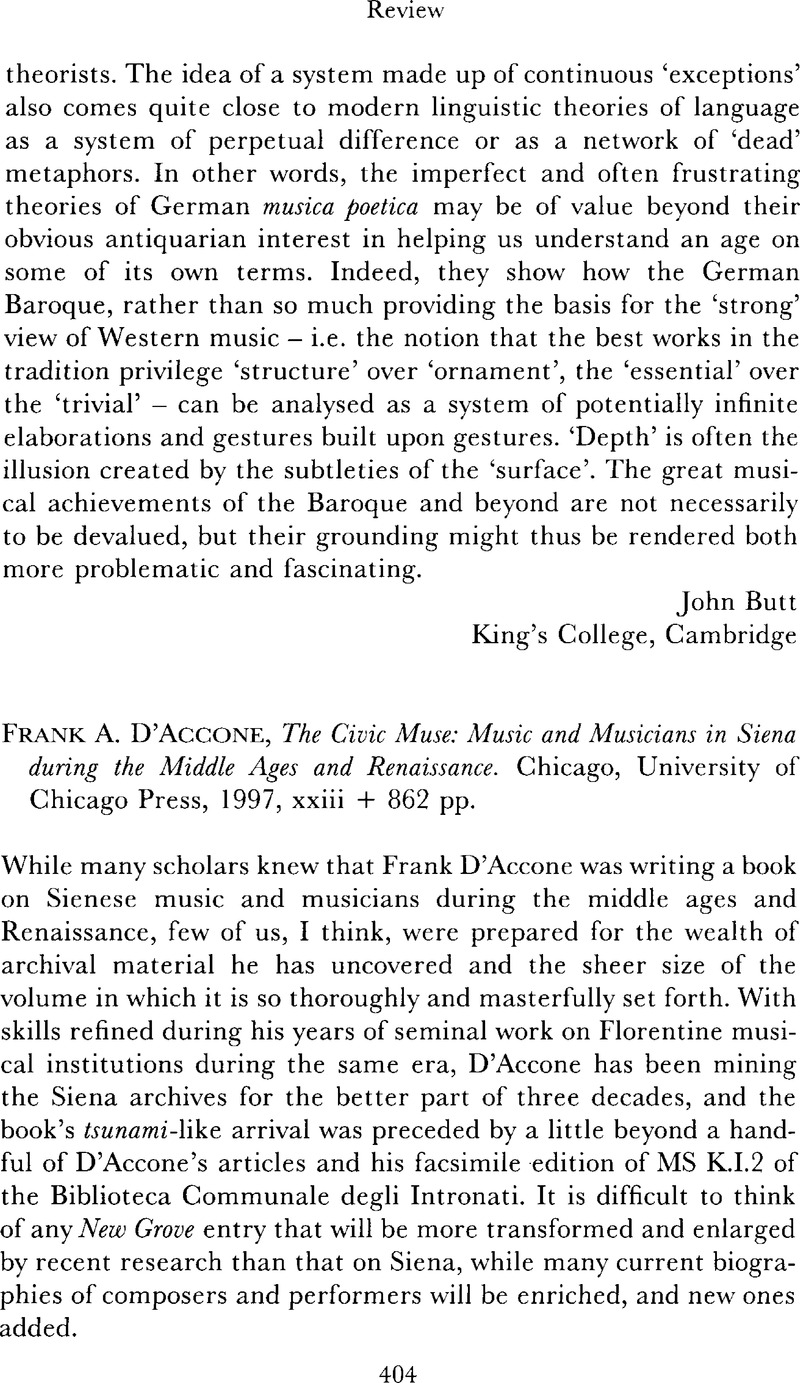Article contents
Frank A. D'Accone, The Civic Muse: Music and Musicians in Siena during the Middle Ages and Renaissance. Chicago, University of Chicago Press, 1997, xxiii + 862 pp.
Published online by Cambridge University Press: 05 December 2008
Abstract

- Type
- Reviews
- Information
- Copyright
- Copyright © Cambridge University Press 1999
References
1 Mistakenly given as 1230 on p. 321.
2 Martines, L., Power and Imagination: City States in Renaissance Italy (New York, 1979), p. 137.Google Scholar
3 Important forthcoming musicological studies on Florentine churches are those of Marica Tacconi, on the liturgical books of the Santa del Fiore, and John Stinson, on the Medici family church of San Lorenzo.
4 On Zenobius, see Wilson, B., ‘Music, Art and Devotion: the Cult of St Zenobius at the Florentine Cathedral during the Early Renaissance’, forthcoming among the published papers of the conference ‘Cantate Domino: Musica nei secoli per il Duomo di Firenze’,Florence,23–5 May, 1997.Google Scholar
5 On the cathedral schools, see Gambassi, Osvaldo, ‘Pueri Cantores’ nelle cattedrali d'Italia tra medioevo e età moderna: Le scuole Eugeniane, scuole di canto annesse alle capelle musicali (Florence, 1997)Google Scholar, which appeared too late to be included in D'Accone's study.
6 Lanza, Antonio, Lirici Toscani del '400 Rome (Rome, 1975), vol. ii, pp. 167–213Google Scholar, where twenty-six poems are edited, including the two Sienese canzone, ‘Magnanimo signore, per quello amore’ and ‘Premia costui del merto suo, Signore’ (pp. 183–8). The two poems represent two sides of a debate on the utility of war.
7 Varanini, Giorgio, Neri Pagliaresi: Rime sacre ii certa o probabile attribuzione (Florence, 1970), pp. 28–35.Google Scholar
- 1
- Cited by




